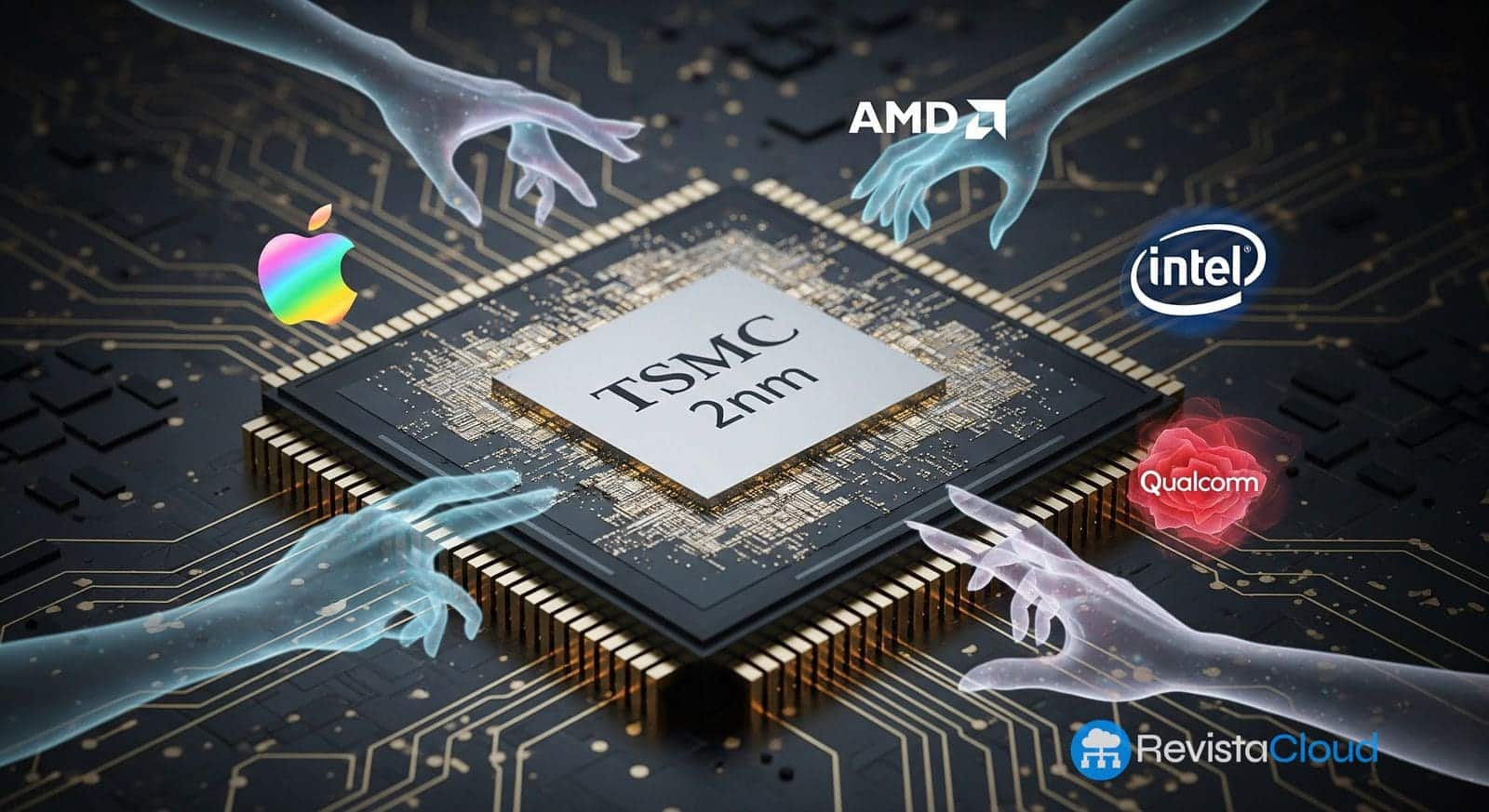TSMC has notified its clients that starting in January 2026, it will implement a multi-year plan of increases for nodes below 5 nm — 2 nm, 3 nm, 4 nm, and 5 nm — with an average increase of 3–5% annually, according to industry sources. This unusual measure, given its four-year horizon, reinforces the underlying message: the demand for AI and HPC will continue pushing the technological frontier, and the bargaining power of the world’s largest foundry is expanding.
What’s changing
- Schedule and scope. From 2026, TSMC will apply annual revisions to 2/3/4/5 nm nodes, with mean hikes of 3–5% per year.
- Rationale. The company will shift costs (energy, materials, skilled labor) and a high capex (new factories, EUV/High-NA, advanced packaging expansion) into pricing, establishing an “equitable” approach between clients, according to the sector.
- Impact per node. For the 3 nm family, analysts anticipate single-digit annual increases that, combined, could reach double digits over the period.
Why now
The “compute race” driven by AI isn’t limited to the cloud: hyperscalers (Microsoft, AWS, Google) and manufacturers of AI PC, automotive, and robotics are raising the need for density and efficiency at the edge. In this wave, TSMC—which produces over 80% of the leading AI chips, according to market estimates—concentrates the cutting-edge capacity needed by NVIDIA, AMD, Qualcomm, MediaTek, Apple, and others fabless. Chronic shortages in CoWoS and advanced packaging add pressure.
Market insight: In Q3 2025, advanced nodes already represented 74% of TSMC’s revenue (5 nm: 37%; 3 nm: 23%). With 2 nm entering volume production in 2026, analysts expect this proportion to surpass 75%.
A rare… and revealing strategy
TSMC has anticipated the negotiations and introduced a multi-year framework—something unusual in the foundry—to provide visibility internally and to clients regarding capacity, capex, and roadmap (DTCO→STCO). The implicit message: there are no credible substitutes in performance-per-watt and yield at the frontier, and prioritizing investment requires sustained prices.
Meanwhile, the company is shifting resources (teams and talent) from 6/7 nm toward 5 nm and below to meet the AI demand. This will secure its leadership but could strain supply for clients of mature nodes.
Implications for the ecosystem
- Hyperscalers and fabless AI companies. The cost per die and packaging will increase; long-term contracts and allocation priorities will become even more critical. Clients may experience partial pass-through of costs to list prices or margins in training and inference platforms.
- OEMs of smartphones/PCs. For 5/4/3 nm, Bill of Materials (BOM) pressure will grow; differentiation based on efficiency and packaging (chiplets, 3D, hybrid bonding) will weigh more than mere node shrink.
- Mature nodes. If the capacity mix shifts toward <5 nm, some clients with 6/7/12/16/28 nm processes may face longer lead times or less favorable prices—unless they secure volume agreements or diversify across foundries.
- Advanced packaging. CoWoS/SoIC will continue to be bottlenecks; TSMC is expanding capacity, but demand for GPU/AI accelerators will outpace supply in 2026.
Market interpretation
For investors, the signal is dual:
- More defensive revenue driven by mix and pricing power at leading nodes.
- Visibility into capex and utilization supported by multi-year AI contracts.
External consensus that projected AI exposure at around 35% of revenue by 2028 is already recalibrating: some brokers are moving this forward to 2026, if order momentum continues.
It’s not just “another hike”: it’s a leadership stance
TSMC’s plan does more than just offset costs; it solidifies its role as the computing arbiter for the coming decade. Sector-wise, it’s a statement: who sets the pace in 2/3 nm and in STCO packaging will shape the computing future. Today, that role—based on yield, scale, and customer portfolio—carries TSMC’s mark.
Quick key points
- 2026-2029 hikes: 3–5% annual increases in 2/3/4/5 nm.
- Reason: AI/HPC demand exceeds supply; rising capex and costs.
- Current mix: 74% of revenue from advanced nodes (Q3 2025).
- Risks: increased pressure on mature nodes; bottlenecks in packaging.
- Strategic benefit: greater pricing power and leadership at the frontier.
Practically, by 2026, the industry will need to choose where to bear the costs: price, margins, or architecture. The only thing not rising is market patience: the AI curve moves fast, and TSMC is charging for leading the way.
via: ctee

